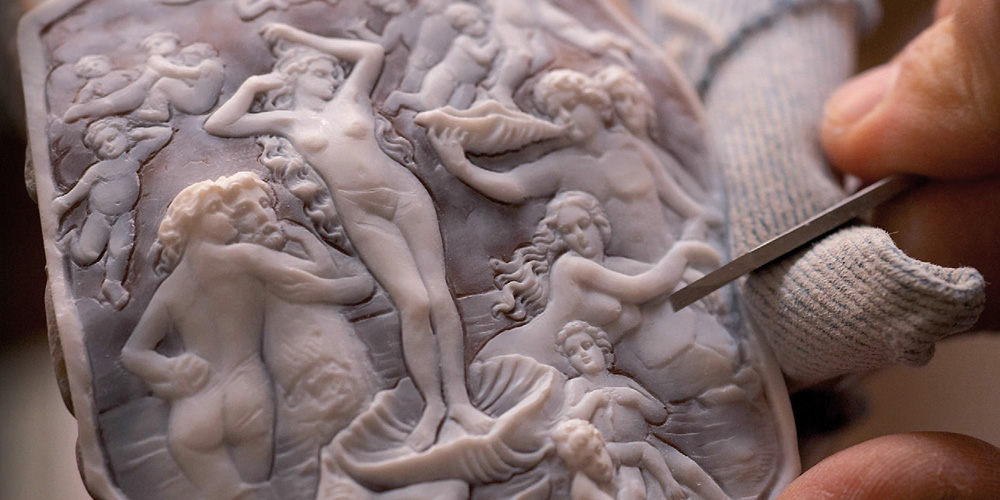History of the Cameo: its origins between legend and reality

Naples is a city full of shades. Often in the Neapolitan tradition the myth merges with history, even the art of working with the Cammeo, rooted in legend. It is said that already the ancient Greeks practiced this art, to then become Roman amanuensis art after the Greeks themselves were conquered by Rome.
The Romans incorporated this art into everyday life but above all in ceremonies of religious worship. With the advent of Christianity and the Middle Ages this art fell into oblivion, so much so that it was practiced mostly in the African regions facing the Mediterranean, until 1800 when Italy and, in particular Naples with Torre del Greco and its artisans.
How the cameo is produced: processing of an artistic jewel
The cameo is processed in different phases: it starts with the choice of the shell, and then proceeds with the popping, or with a cut on the upper part of the shell the so-called "coppa". They follow the signature and the shaping, carving all inside the cup the profiles to be defined according to the detail phase, the bundling, which gives the shell the desired shape. Finally, the engravers provide for the definition and polishing.
The final yield is a stone with a high artistic value, which contains tens of hours of work in just a few centimeters.
The art of the cameo in Naples
The art of cameo processing developed in Naples in the area of Torre del Greco together with that of coral, thanks to the commercial exchanges coming from Africa and Central America. Torre del Greco has reached the pinnacle of success thanks to its artisans, so much so that, in 1876, the School of Engraving on Coral and Artistic Industrial Design was established, transforming the town into a tower for processing coral and the most important shells in the world.
Even today the Neapolitan school holds the record for the most advanced techniques of processing cameo and coral and for the preciousness of the artifacts.
The Cameo museum in Naples
The fulcrum of this centuries-old tradition, in the Neapolitan historical center, is the renowned Gerolomini gallery, shop of resale and museum of the cameo, which among its proposals offers dozens of beauties of the art of inlaying stones, corals and shells that capture the look and attention. They range from the most famous nude cameos with the faces of women, to the most elaborate floral styles, passing through scenes of everyday life in antiquity.
A beautiful place where you can fall in love with a typical amanuensis art of the Neapolitan secular tradition. Run to discover the art of cameo again thanks to the small museum of the cameo.










Lascia un commento